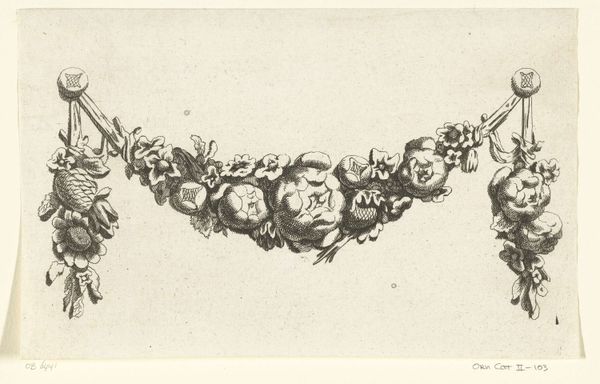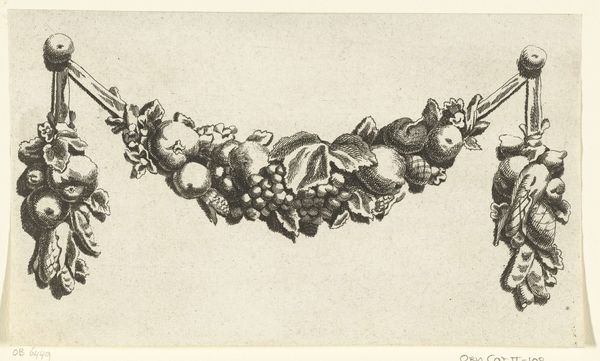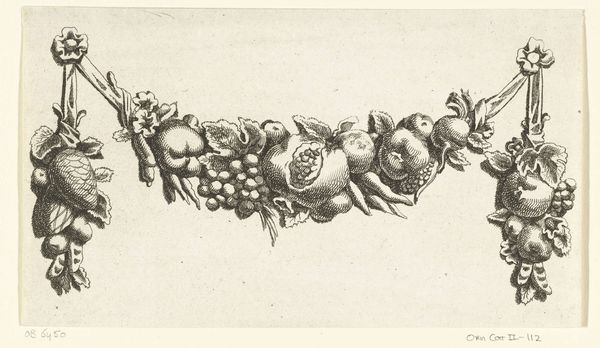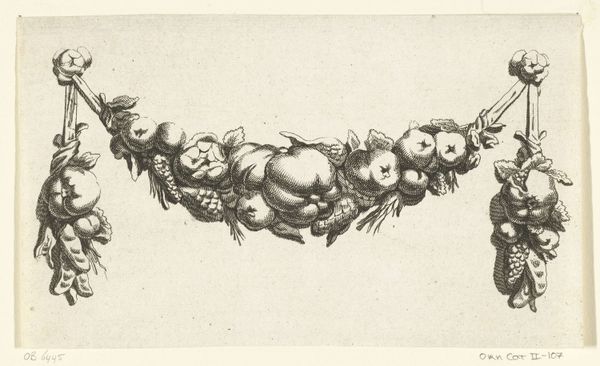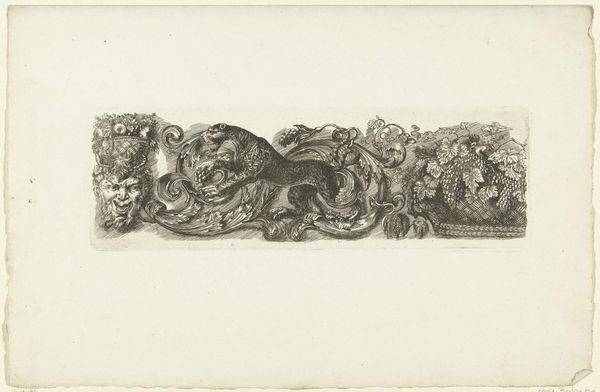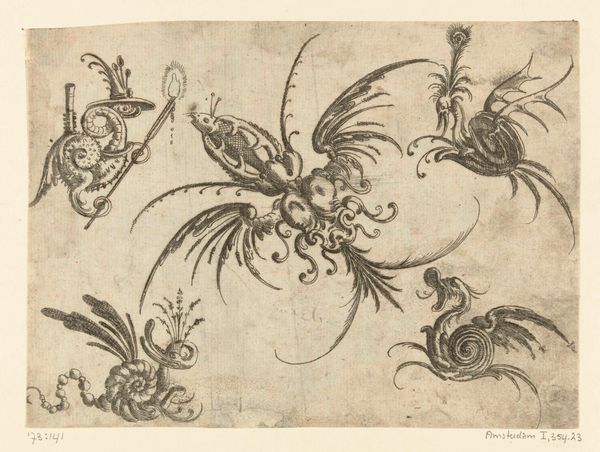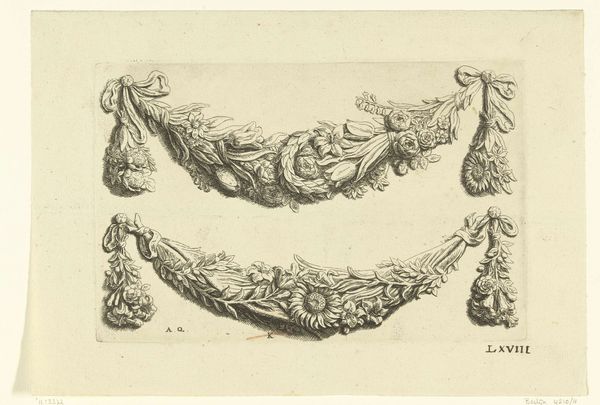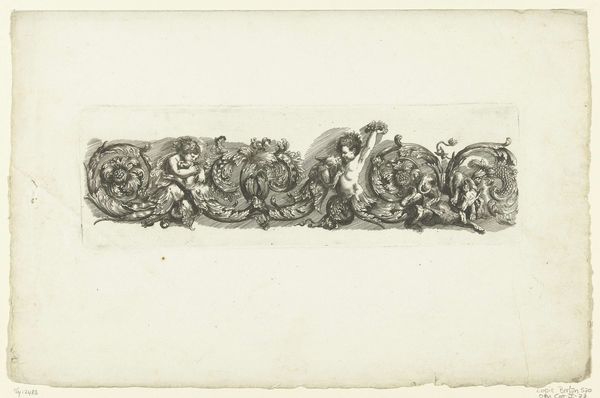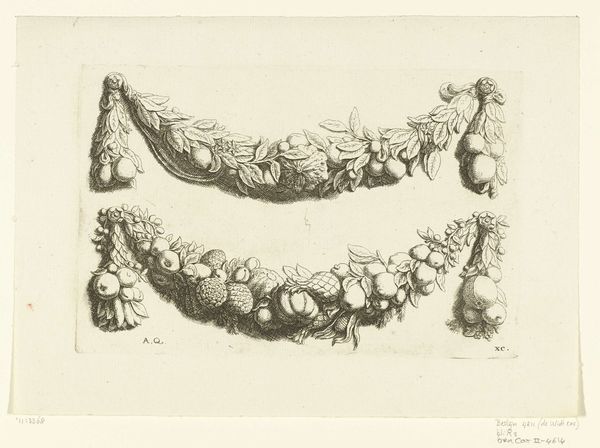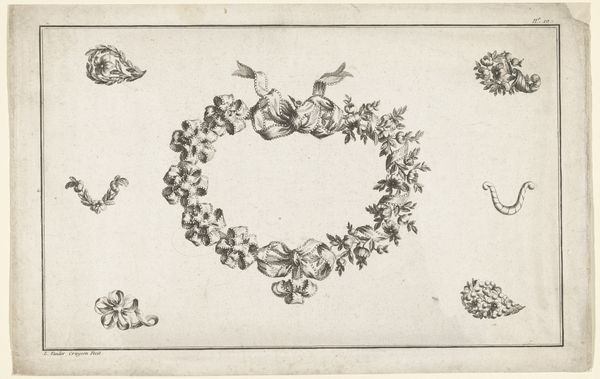
print, engraving
#
baroque
# print
#
old engraving style
#
form
#
geometric
#
line
#
decorative-art
#
engraving
Dimensions: height 114 mm, width 191 mm
Copyright: Rijks Museum: Open Domain
Editor: Here we have "Festoen met een granaatappel in het midden," or Festoon with a Pomegranate in the Middle, a print by Francoys Dancx, made before 1677. The crisp lines forming this garland give it a really formal feel. What’s your take on this from a historical perspective? Curator: This print offers us a fascinating window into the social function of art during the Baroque period. The precision of the engraving elevates what might seem a simple decoration into a status symbol. Editor: Status symbol? How so? Curator: Think about the cost of commissioning such a piece. It demonstrates wealth and taste, aligning the owner with ideals of beauty and refinement that were being actively promoted by powerful institutions. How would a print like this have been used? Editor: Perhaps to decorate a home, showing off wealth, as you said? Curator: Exactly. It speaks to the increasing importance of visual culture and how art served as a marker of social standing. It would also serve as source for other artists when creating large scale decorations. It's more than just a pretty picture; it's evidence of a carefully constructed cultural landscape. Editor: I hadn’t considered the social aspect so directly. It’s like a visual representation of power. Curator: Precisely. The very act of displaying such an image becomes a form of cultural capital. Hopefully that helped broaden how you view prints, as so much more than images on paper. Editor: Absolutely. Now I see the print itself as an artefact deeply embedded in its time. Thank you.
Comments
No comments
Be the first to comment and join the conversation on the ultimate creative platform.

